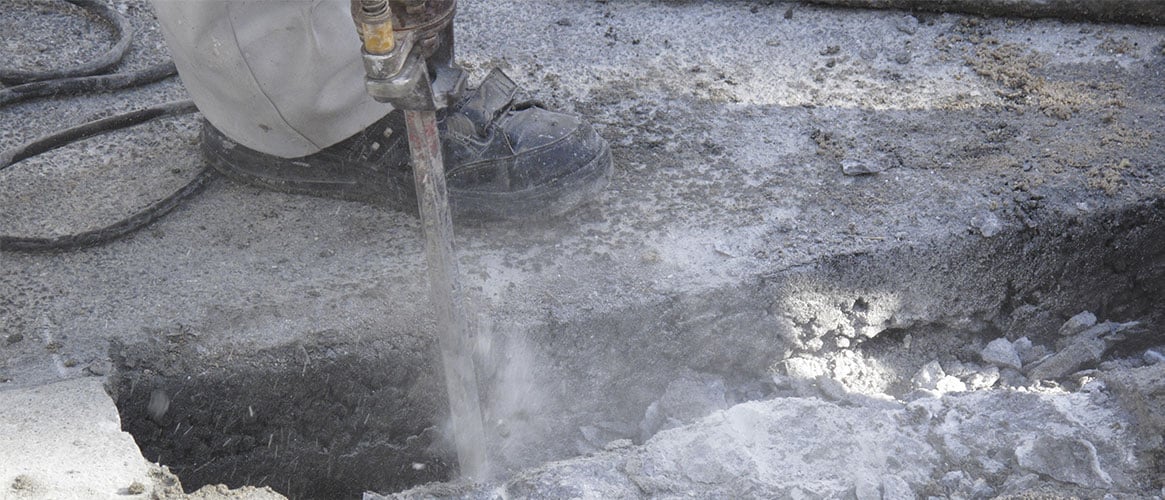Note: Cal/OSHA has specific regulations that govern the exposure limits for respirable crystalline silica. These include requirements for a written program, exposure monitoring and employee notifications, dust control equipment and work practices, signage, employee training, and medical surveillance. See Cal/OSHA’s Silica FAQs.
Concrete isn’t just a mixture of cement and water; it contains some dangerous ingredients. Alkaline compounds such as lime can be corrosive to the skin. Chromium causes allergic reactions. And then there’s silica, the lung-damaging substance that is so dangerous a tighter standard was adopted nationwide in 2016.
The risk of illness or injury depends on the level and length of exposure and the sensitivity of the individual.
What your employees need to know about concrete and cement
Inhalation of cement dust may occur when workers empty bags of dry cement material to make concrete, cut concrete work tiles, and use jackhammers to break up a sidewalk or road during repairs.
This exposure can cause nose and throat irritation. Long-term exposure to concrete dust containing crystalline silica can lead to a disabling lung disease called silicosis.
However, breathing problems are just one concern. If cement dust or wet concrete comes in contact with the skin, burns, rashes, and skin irritations can develop.
Also, should dust from concrete or cement get in the eyes, immediate or delayed reactions may occur, ranging from redness to painful chemical burns.
What your employees need to do when working with concrete and cement
To minimize the risk of contact to the skin and eyes, wear the proper personal protective equipment (PPE).
To reduce the chance of breathing in cement dust:
- Wet down the work area to keep dust out of the air and use wet cutting methods rather than dry cut masonry products.
- Use engineering control methods such as vacuums to pull the dust out of the air.
- If dust can’t be avoided, wear the appropriate respiratory protection, which must be approved by the National Institute for Occupational Safety and Health (NIOSH). Respirators also must be provided upon request.
- Mix dry cement in well-ventilated areas.
- Remember to wash your hands and face before eating, drinking, or using the restroom. And, if wet or dry concrete gets on your skin, wash it off as soon as possible.
What to cover at your safety meeting about concrete and cement
Demonstrate and discuss when to use each of the above control methods. For example, the wet method is considered the number one line of defense to minimize the risk of breathing in dust particles. But, isn’t always appropriate.
On roof tops the wet method should not be used because it creates a slip/fall hazard for your workers. Vacuum dust collection systems should be used instead.
In addition, review and demonstrate how PPE should be worn and that your employees know where the washing station and first aid kit are located.
When working with cement, the skin, eyes, lungs, and other internal organs are all at risk. The potential of short-term and long-term injuries is there. Make sure your workers wear the right clothing and control the amount of dust particles that emit into the air. This ensures they’re on hand each day to help you bring your projects to conclusion, minimizing the risk of both illness and costly delays.

